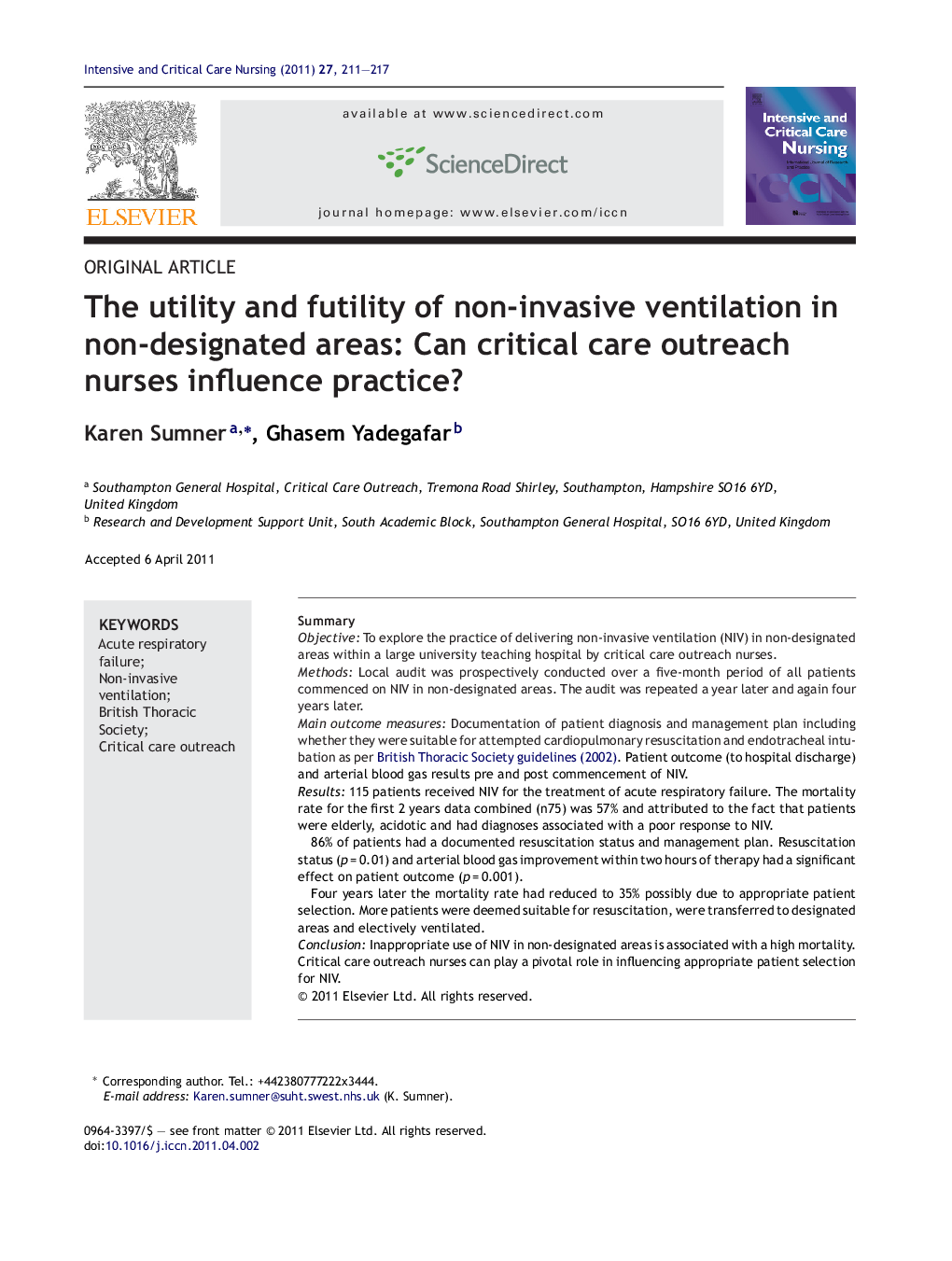| Article ID | Journal | Published Year | Pages | File Type |
|---|---|---|---|---|
| 2652384 | Intensive and Critical Care Nursing | 2011 | 7 Pages |
SummaryObjectiveTo explore the practice of delivering non-invasive ventilation (NIV) in non-designated areas within a large university teaching hospital by critical care outreach nurses.MethodsLocal audit was prospectively conducted over a five-month period of all patients commenced on NIV in non-designated areas. The audit was repeated a year later and again four years later.Main outcome measuresDocumentation of patient diagnosis and management plan including whether they were suitable for attempted cardiopulmonary resuscitation and endotracheal intubation as per British Thoracic Society guidelines (2002). Patient outcome (to hospital discharge) and arterial blood gas results pre and post commencement of NIV.Results115 patients received NIV for the treatment of acute respiratory failure. The mortality rate for the first 2 years data combined (n75) was 57% and attributed to the fact that patients were elderly, acidotic and had diagnoses associated with a poor response to NIV.86% of patients had a documented resuscitation status and management plan. Resuscitation status (p = 0.01) and arterial blood gas improvement within two hours of therapy had a significant effect on patient outcome (p = 0.001).Four years later the mortality rate had reduced to 35% possibly due to appropriate patient selection. More patients were deemed suitable for resuscitation, were transferred to designated areas and electively ventilated.ConclusionInappropriate use of NIV in non-designated areas is associated with a high mortality. Critical care outreach nurses can play a pivotal role in influencing appropriate patient selection for NIV.
